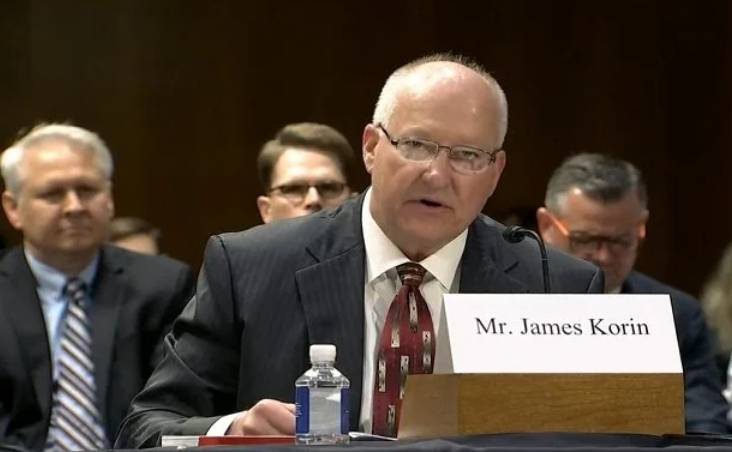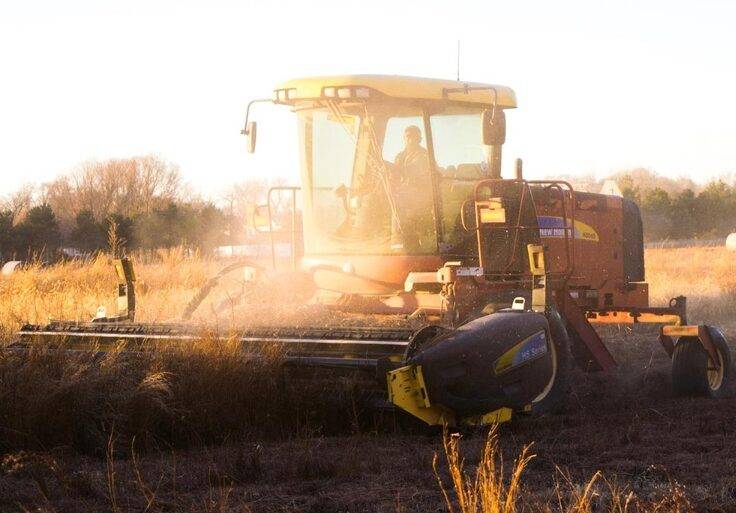Crop insurance executive gives testimony to U.S. Senate committee
The renewal of the United States Farm Bill is scheduled for the end of 2023

Jim Korin, the President of NAU Country Insurance Company, provided testimony about the importance of the crop insurance industry during a recent hearing of the United States Senate Committee on Agriculture, Nutrition and Forestry-Subcommittee on Commodities, Risk Management, and Trade.
“Crop insurance serves as a vital risk management tool for farmers,” noted Korin, adding, “Its success can be attributed to the collaborative effort between the public and private sectors, as well as the support it receives from Congress.”
Crop insurance at the federal level in the U.S. provides coverage for around 135 crops, encompassing almost 400 million acres of agricultural production across the country. Beyond safeguarding farmers from economic losses stemming from a range of factors that can harm crops, it holds a crucial position in American society by ensuring price consistency within the agricultural domain, fostering food security, enhancing rural economies, and diminishing the need for government assistance.
Backed by numerous competing companies, independent agents, and a vast workforce, crop insurance extends its coverage to more than 90% of agricultural production in the United States.
Korin highlighted three fundamental principles that, in his view, form the foundation of crop insurance’s success:
- flexibility,
- affordability,
- and accessibility.
Flexibility
Farmers possess the capability to customize coverage according to their distinct operational and risk mitigation requirements, with choices encompassing individual-field, whole-farm, and county-based coverage. Plans that provide coverage from 50% up to 95% guarantee that crop insurance remains within reach for farmers of various scales and financial conditions.
Affordability
Crop insurance plays a pivotal role in upholding a secure and reasonably priced food supply, providing farmers with a safety net to navigate challenging growing seasons. The collaboration between the private sector and the government, sharing risks and offering premium support, empowers farmers to access the coverage they need. This symbiotic arrangement not only alleviates the burden on taxpayers but also facilitates the growth and endurance of crop insurance.
Availability
The participation of the private sector in administering crop insurance is integral to its ongoing prosperity. Enterprises such as NAU Country channel billions of dollars into rural areas, engaging agents, advancing technological capabilities, and taking on substantial financial risks. These investments ensure the provision of coverage that aids the country’s farmers, enabling swift access to funds when claims arise. While crop insurance has demonstrated its effectiveness, Korin also highlighted aspects that could benefit from enhancement.
Enhanced coverages
Crop insurance providers are proactively working alongside farmers and industry associations to amplify and broaden the array of coverage choices for crops critical to the longevity of agricultural production. Programs such as the Enhanced Coverage Option (ECO) policy and the Hurricane Insurance Protection-Wind Index (HIP-WI) endorsement have demonstrated potential by offering supplementary coverage during natural calamities. Increasing the affordability of these policies will bolster their efficacy and diminish the necessity for unplanned aid.
Process refinement
Ongoing enhancement of the 508(h) process, enabling inventive solutions in crop insurance, has the potential to elevate the program’s efficiency and impact. Collaborative endeavors with the Risk Management Agency (RMA) are geared toward expediting the introduction of new policies to the market and enhancing the creation of fresh 508(h) products. This collective approach aims to decrease expenses and boost the adoption of these offerings within the market.
Administrative reimbursements
Since 2015, the crop insurance sector has been working with unchanged administrative reimbursements, despite facing substantial wage inflation and escalating costs. To ensure fair and effective program delivery for all farmers, the industry advocates for a straightforward inflationary adjustment that can provide equitable relief.
Environmental practices
American farmers have actively embraced a range of eco-conscious practices, including no-till farming, utilization of cover crops, variable-rate fertilizer and chemical application, and the adoption of cleaner-burning tractors. To qualify for crop insurance, farmers are required to certify their adherence to land management practices for highly erodible lands and wetlands. This certification process is overseen by the USDA’s Natural Resources Conservation Service (NRCS).
Although the increased adoption of carbon-sequestering farming practices is regarded as advantageous, it is advised that non-market incentives should be sourced from independently funded initiatives to prevent diverting resources from the crop insurance program. The significance of crop insurance for the sustenance of farmers and ranchers lies in their ability to implement these practices while maintaining their operations.
Actuarial soundness
Modifications that result in the exclusion of individuals from eligibility could compromise the program’s actuarial stability. The efficacy of crop insurance hinges on a varied risk pool that encompasses farmers and ranchers of all scales and from every region across the nation. Weakening this risk pool might lead to elevated premiums for those who still maintain their eligibility.
Lastly, Korin emphasized the deep-seated historical origins of NAU Country Insurance, stretching back to the very beginnings of crop insurance and its collaboration with the U.S. federal government. He noted:
“Crop insurance constantly adapts to address emerging agricultural obstacles and equip farmers and ranchers with the necessary resources for their prosperity.”



